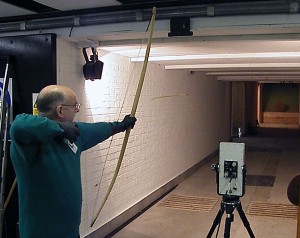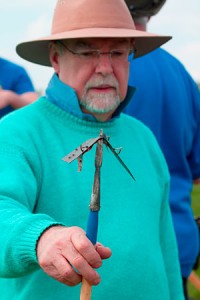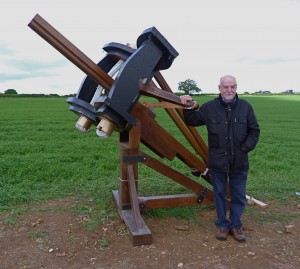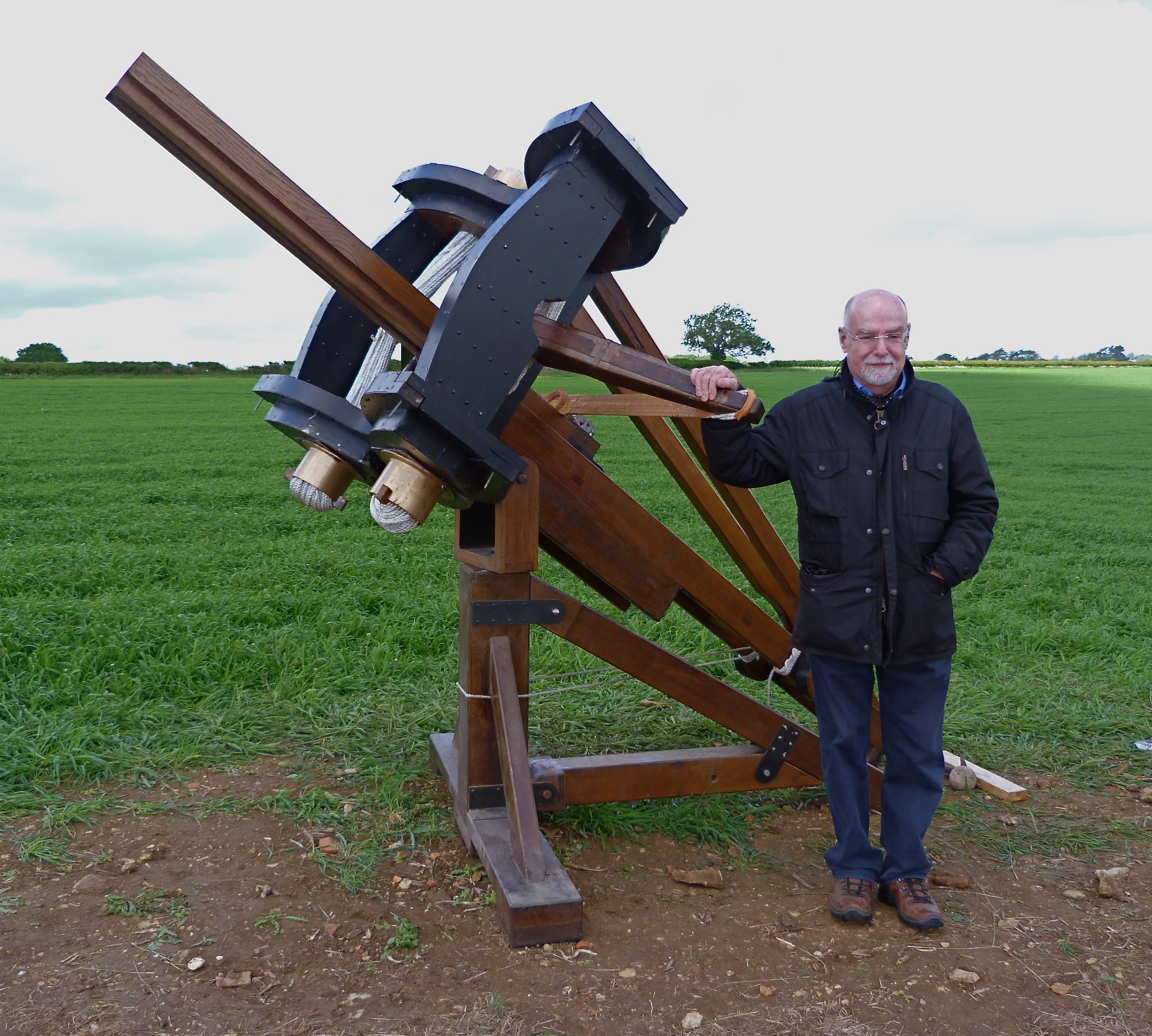- Arrow in flight
- Field trials, testing ballista against Roman scale armour
- Reconstruction of a 2 libra Ballista
I became interested in experimental archaeology in the early 1970s when I saw a pattern welded sword made by John Anstee, who later became a good friend.
From then on I was hooked. I’ve always wanted to know how things were made. Over the years I have to admit there are two statements that are like a red rag to a bull to me:
- “No one knows how they did it.” Which means no one knows because no one has bothered to look.
- “There is no evidence to support.” Which means they don’t want anyone to look because it will bring their own authority on the subject into question.
My view is:
Absence of evidence is not evidence of absence.
The technology of the past has always fascinated me. When I see ancient monuments and artefacts I always think, “This was done by men not super human beings.”
In the world of metalworking the basic principles haven’t changed since the discovery of metal. This in a way makes it easy to get to grips with the technology that brought these items into being.
I have always believed that if you want to know how something from antiquity works make a copy in the same way it was done in the past and test it.
In experimental archaeology there have always got to be two sorts of tests; field trials and laboratory testing. When these two methods are applied and they confirm each other then you have done as much as can be expected.
It is important to remember that no one knows everything and the ability to seek the help of other people who have different skills is essential.






Dear sir,
I’m currently researching plumbatae (as well as testing them). Of course I’ve read your 1995 article from Arbeia, but I came across a lecture which you presented at the Tees Archaeology day School back in November 2009:
————-
Case study 1: The plumbata. Will explain why it was necessary to determine the
way they were made to discover how the lead was cast onto the
wood without burning it. Why field trials were necessary to
discover the best way to throw them.
———-
I was wondering if this lecture was publushed anywhere in the meantime? I’d love to read it.
Yours sincerely,
drs. Robert M. Vermaat
Houten, The Netherlands
Dear Dr Sim,
I am a Undergraduate Archaeology student from Reading University and I am doing a dissertation on magnetic variation on two open air sites, Butser and St Fagans. I was told to get in touch with you about the Technology Hut at Butser as you are more likely to know what metal working has gone on inside that building, if you have any information on the iron working that may have gone on inside that building I would be grateful.
So far I haven’t had a lot of luck with records of activity inside the building, I only have a week till it’s due in but if you have any information that would be brilliant,
Many thanks,
Elsie Brooks